'Unlimited': How robotics research at UT-Austin is working to create real-world impact
Walk into the Anna Hiss Gymnasium at the University of Texas, and an autonomous, or self-operating, robot might just pass by you. With a team of interdisciplinary researchers, a renovated space, about 200 students and national partnerships, Texas Robotics is growing fast and competitively.
Robots like “Spot,” the Boston Dynamic four-legged rover, and the Alpha Truck, an off-roading vehicle that can go 25-30 mph, cruised through the Hook ‘Em House during the first weekend of South by Southwest. Peter Stone, director of Texas Robotics, joined others at a SXSW panel to discuss AI-enabled robots, and UT students and a professor led a workshop about how to train a humanoid robot.
Stone, who has worked at the university for more than 20 years, said UT is now a national and international leader in robotics, with 10 corporate partners. UT offers a research program and robotics minor for undergraduates, and a graduate portfolio program for postsecondary students.
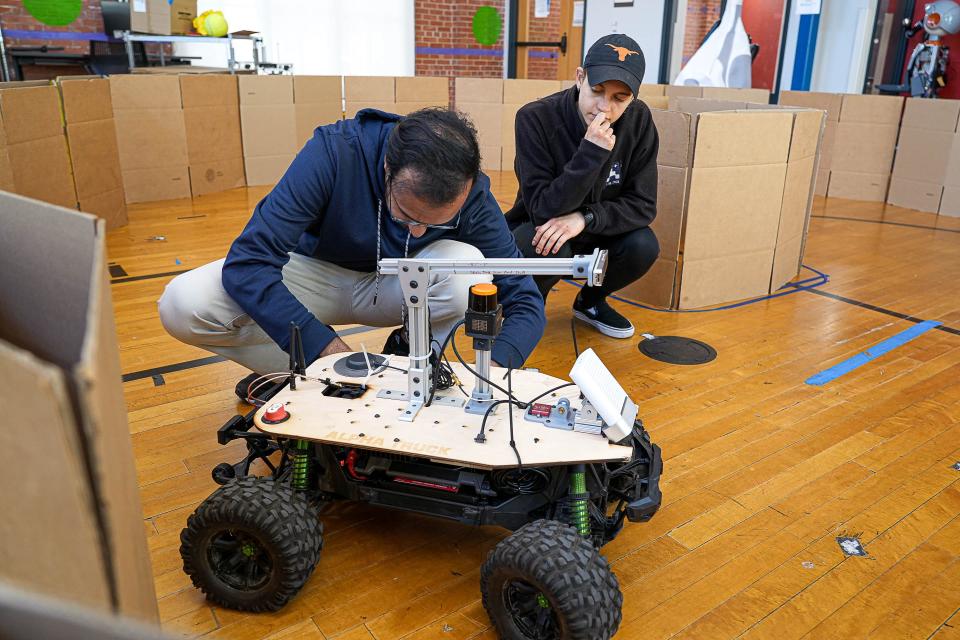
“Robotics now is in some ways where artificial intelligence was 10 or 15 years ago,” he said. “There’s basic research being done, there's algorithms that are being developed, but it hasn't really gotten out into the whole world in a really huge way.”
Artificial intelligence functions like ChatGPT are disembodied. But at UT, they can be tested and used in new ways, Stone said.
“A baby doesn't just learn by listening to sounds, but rather gets to interact with things — to pick up bottles or blocks and push them to see what happens,” Stone told the American-Statesman. “Robotics is about the brains that have been developed, giving them bodies.”
Texas Robotics brings four departments together: the Department of Aerospace Engineering, the Department of Computer Science, the Department of Electrical and Computer Engineering, and the Department of Mechanical Engineering. The affiliated faculty members range in expertise, from the School of Information to the School of Architecture, said Sridevo Rao, managing director of Texas Robotics.
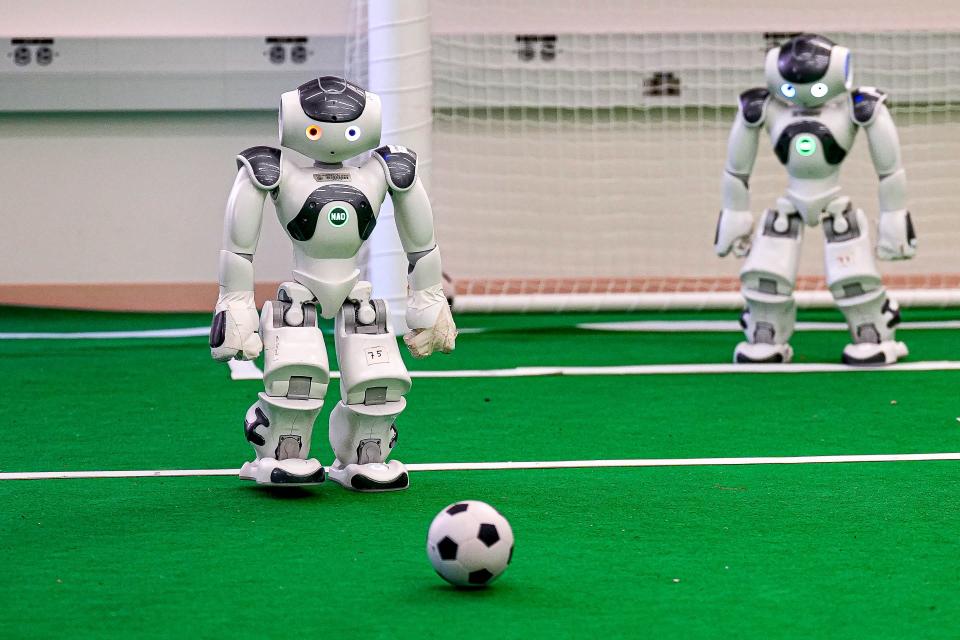
The university lists 36 types of robots on its website, from an Anatomically Correct Testbed hand to a wheelchair controlled by the brain-computer interface. Here are four examples of how UT is researching robots today:
Living with robots
Justin Hart, an associate research professor, runs the Living with Robots Laboratory — a simulated home environment where autonomous robots can be trained on service-related tasks.
Hart teaches a freshman research initiative on research topics such as teaching robots social navigation and mapping spaces with the goal of exploring how a robot can have long-term autonomous function, such as assisting someone in a home.
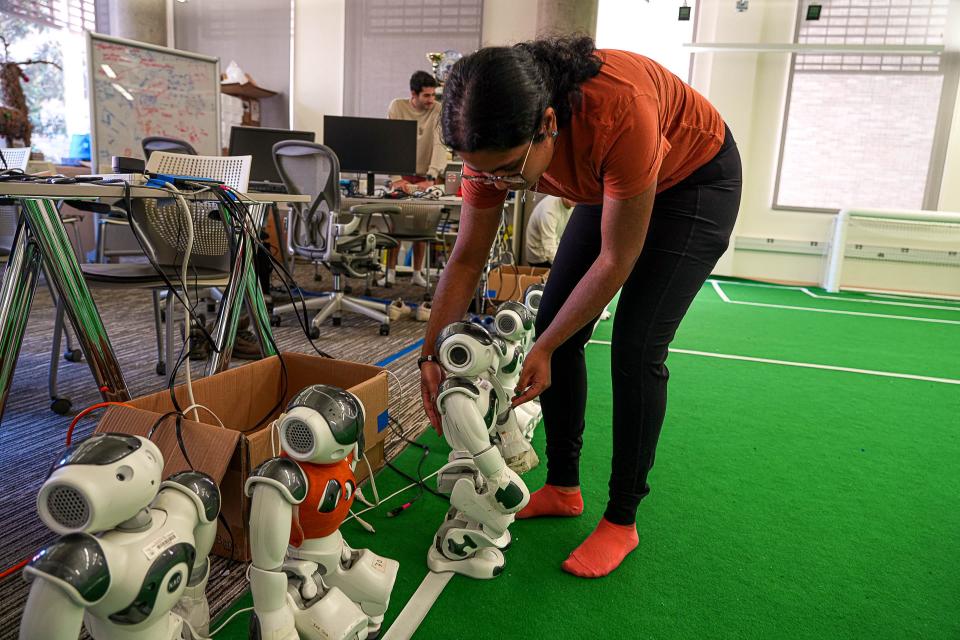
Students programmed the “Dobby” software that runs the robot to have a sarcastic personality and named it after the house elf in the Harry Potter books. At SXSW, Dobby interacted with people, giving riddles or answering questions sophisticatedly and sarcastically. Students said the robot is also trained to give tours.
Hart said the lab trains the robots by modeling tasks. For instance, if he picks up an apple in front of the robot, he then asks it to pick up the apple. The goal is for the robot to be able to do it itself.
Medical research
Farshid Alambeigi, a UT assistant professor, runs the Advanced Robotic Technologies for Surgery Lab. Part of his research looks at how to improve the detection of colon cancer through “surgeneering” tools.
For instance, the colon cancer device, which has three ranges of motion, is controlled by an Xbox-like controller.
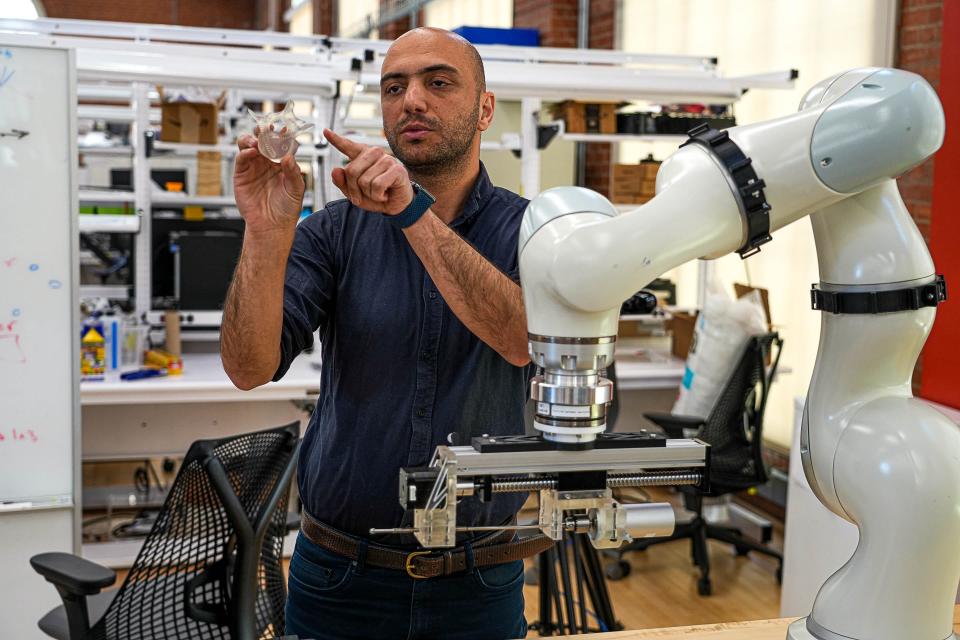
“We try to enable things they couldn’t do before without changing their workflow,” Alambeigi said about their devices, adding that the goal is for it to be very easy to use. “That word intuitive has a lot of meaning in my lab.”
The lab works with UT Dell Medical School to create new surgical instruments and robotic devices to reduce the invasiveness of surgeries. Alambeigi said this includes developing a surgical drill that moves in a curved trajectory to better target osteoporosis in the spine.
Nuclear and Applied Robotics Group
Blake Anderson, a research associate in the Nuclear and Applied Robotics lab, said the lab looks at how robots can help with the “dull, dirty and dangerous.”
For instance, in partnership with the U.S. Energy Department, the lab looks at how robots can detect radiation at plutonium facilities at Los Alamos National Laboratory.
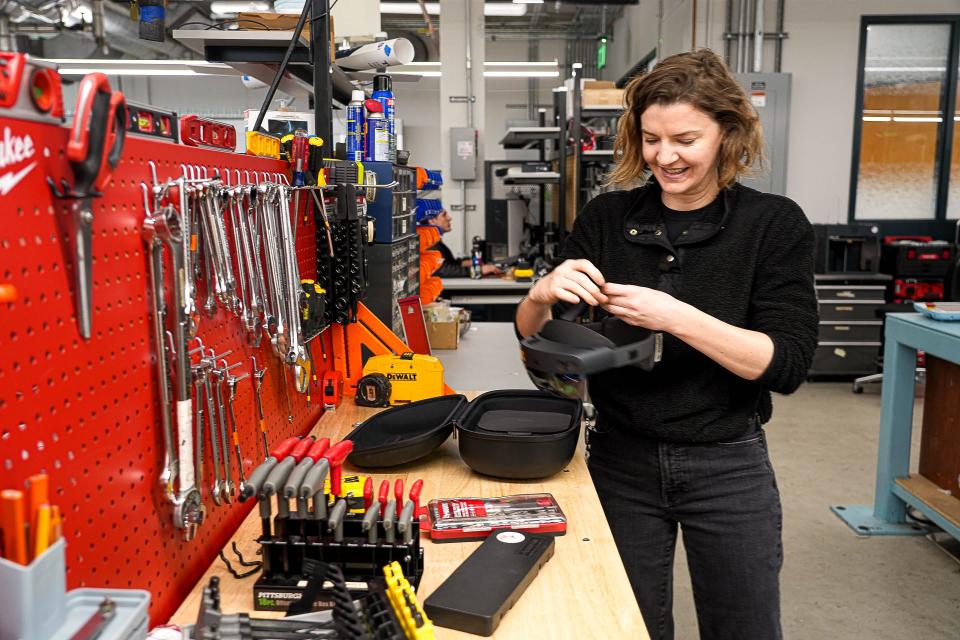
Additionally, in partnership with the Defense Department's Army Futures Command, the lab’s research aims to help create an autonomous unit for the first line of defense in battle, thereby reducing risks for soldiers.
Along with this, the lab is looking at developing software for lab-augmented reality headsets for the Army, through which soldiers would be able to see the status of their robotic assets ahead at a glance.
UT students and robotics
In addition to serving as research assistants, students also participate in robotics at UT in a variety of student organizations.
With Stone, several students are developing software for robot soccer players — a RoboCup team — as a way to apply their learning. It also allows students to identify things human players can do, like knowing their location on a field, that a robot needs to be taught through software.
Each year, the UT team competes against others. By 2050, UT hopes its soccer robots can beat a human team.
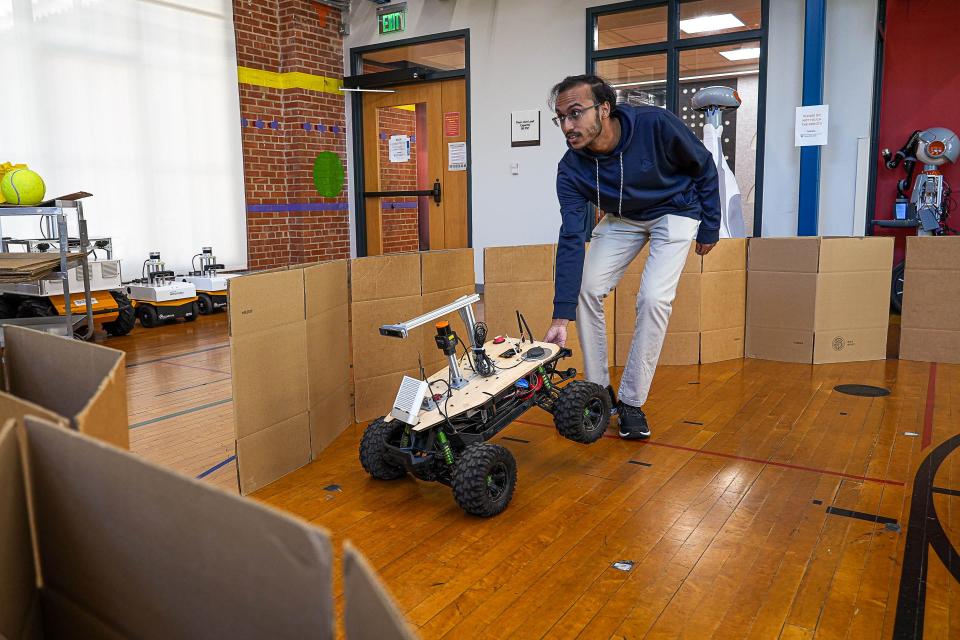
“By pushing the boundary of robotics, we will enable more application in the future,” said Zhihan Wang, a first-year doctorate student. “And if the robots are as capable as humans in playing soccer, we can imagine that there is more capability to be explored.”
Geethika Hemkumar, a fifth-year master's student, said she sees the future of robots as “collaborators” in people's lives. Eylam Tagor, a senior, and Siddhant Agarwal, a second-year doctoral student, want to work on algorithms for autonomous robots in the future.
UT robotics: the big picture
Stone said interest in robotics is only growing, and the school hopes to expand its capacity to allow more students to join the program. As the research grows, UT is also exploring equity and ethics in artificial intelligence through UT’s Good Systems Projects, said Stone, who is a founding member of the team.
“There's going to be a big expansion of the influence of robots in people's domestic lives, in their public lives, in their office and work lives,” Stone said. “Texas Robotics is going to be a part of both developing the fundamental new technologies that make that transition possible, and the interface with industries to try to transition their research and make it useful and practical.
“The potential for impact is just unlimited."
This article originally appeared on Austin American-Statesman: How research at the University of Texas is shaping robotics' impact

